Our new carbon fibre rocket, ‘Ohana, is now sitting on the grass, rigged and ready to paddle. She is a fantastic addition to the MOCC whanau but as well as being lighter and easier to rig she is also somewhat delicate. As anyone who has owned a carbon single or double can testify, there are numerous hazards out there determined to crack, chip or crush the carbon shell.
Many clubs use these carbon waka just for race training and racing but we have determined that it should be available for general club use, particularly for rangatahi and older crews, for whom the reduced weight can be beneficial. That comes with a degree of risk, so to try to mitigate as much as possible please be aware of the following :
Don’t feel obliged to take her out at every opportunity if another waka works for you. Less use is the single biggest way of reducing the risk of damage.
Do not take inexperienced or nervous crews. She is more tippy than the other waka and the cockpits are not easy to get back into should you huli. DO NOT take a crew out where anyone is incapable of getting back into a high sided cockpit. Until steerers and crews have got used to her do not take her out in challenging open water conditions.
The location ‘Ohana is stored in now is her permanent home unless we find a better solution. The tyres should be left where they are and the ama should be strapped down with the tie-down. Do not over-tighten as this can crack the ama like an egg. Please use the old Mangopare cover to protect her when not in use.
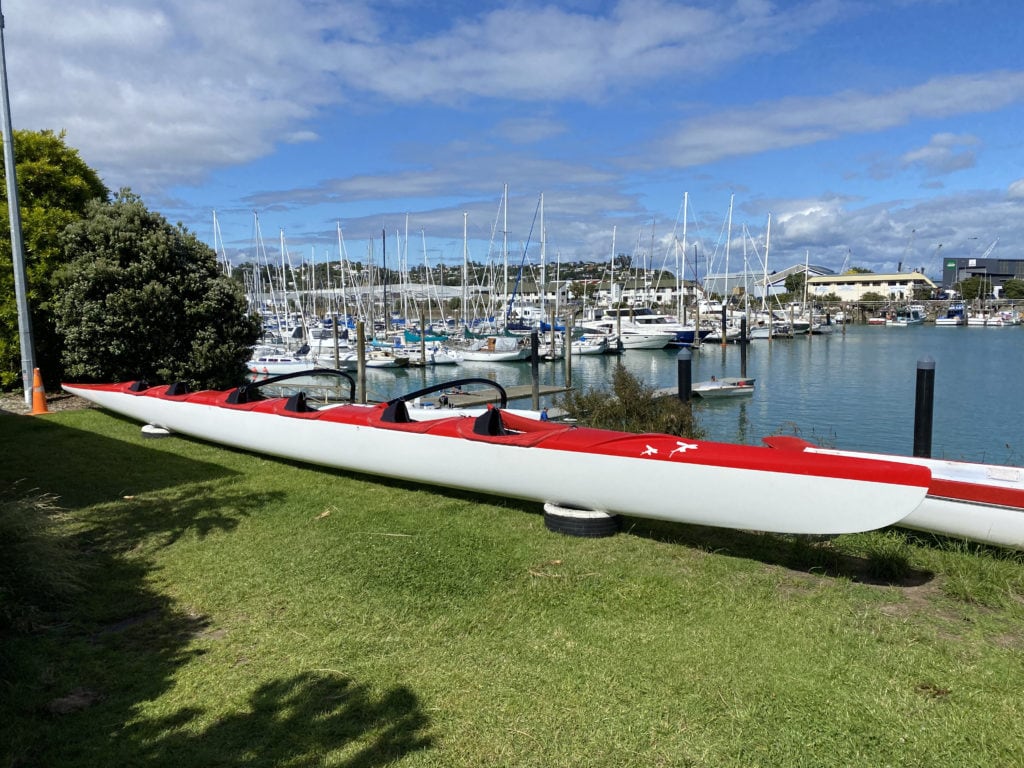
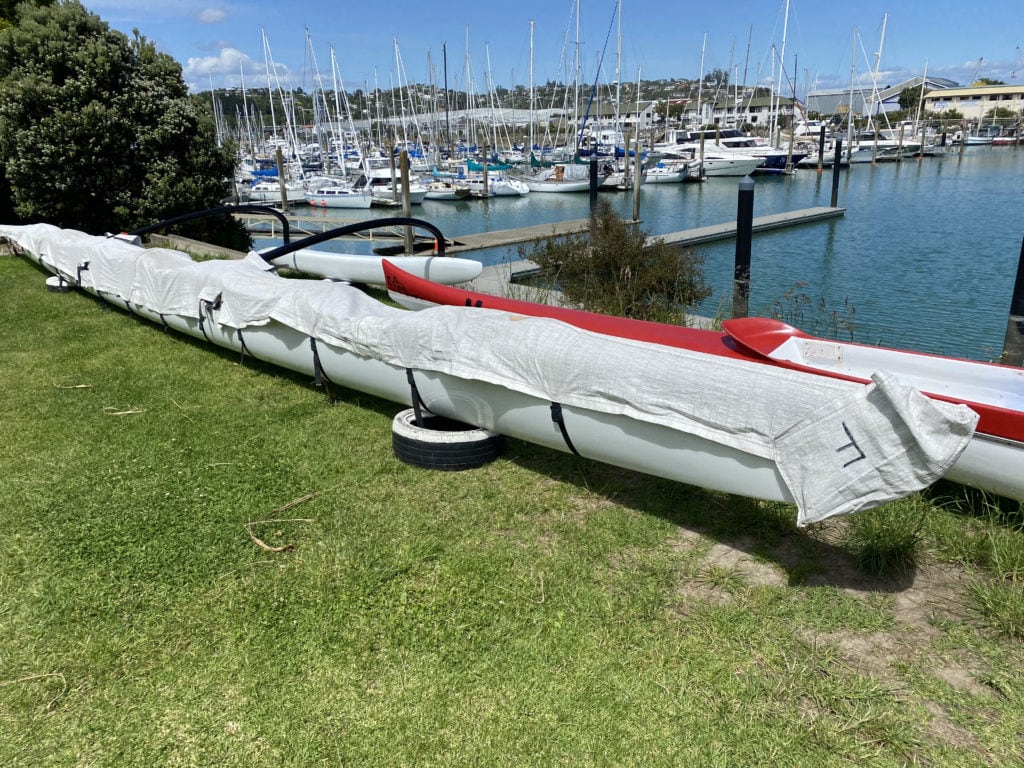
The kiato have two pop up pins to attach them to the waka. Make sure you can see them both so that you know they are engaged. Where they enter the ama there is a small (and rather flimsy looking) locking plate that you will need to check. It should be finger tight only to hold the ama in place.
When attaching spare hoe to the rear kiato, do not overtighten as if you are lashing a kiato. The paddle just needs to stay in place !
When lifting the waka onto the trolley try to lift the hull and ama together (i.e not from one end) so that the nose or tail do not ground out. If possible use the high trolley to also reduce the chance of either end hitting the boat ramp.
You will have to enter the canoe from the dock. This is probably the moment for the greatest potential damage. Keep the canoe away from the edge, including the shells on the dockside. Do not use the top of the hull as a weight support when climbing in. It is not designed to have weight applied downwards and you risk cracking the canoe. Do not lean right when getting in and preferably have your first two paddlers put some weight on the ama as the rest get in.
The canoe turns very sharply so take extra precautions leaving the marina and have a number one who is experienced and aware.
Take as much care as possible not to chip the edges of the cockpit (and your paddle) on changeovers.
The adjustable foot plates use two quick-release bike wheel locks to slide backwards and forwards. They are a bit awkward to access so if you need to move them, take your time. Up to adjust, down to lock. Obviously you should only adjust them when you are on the water, so that will involve the paddler in front of you opening and closing the locks (unless you are a contortionist)
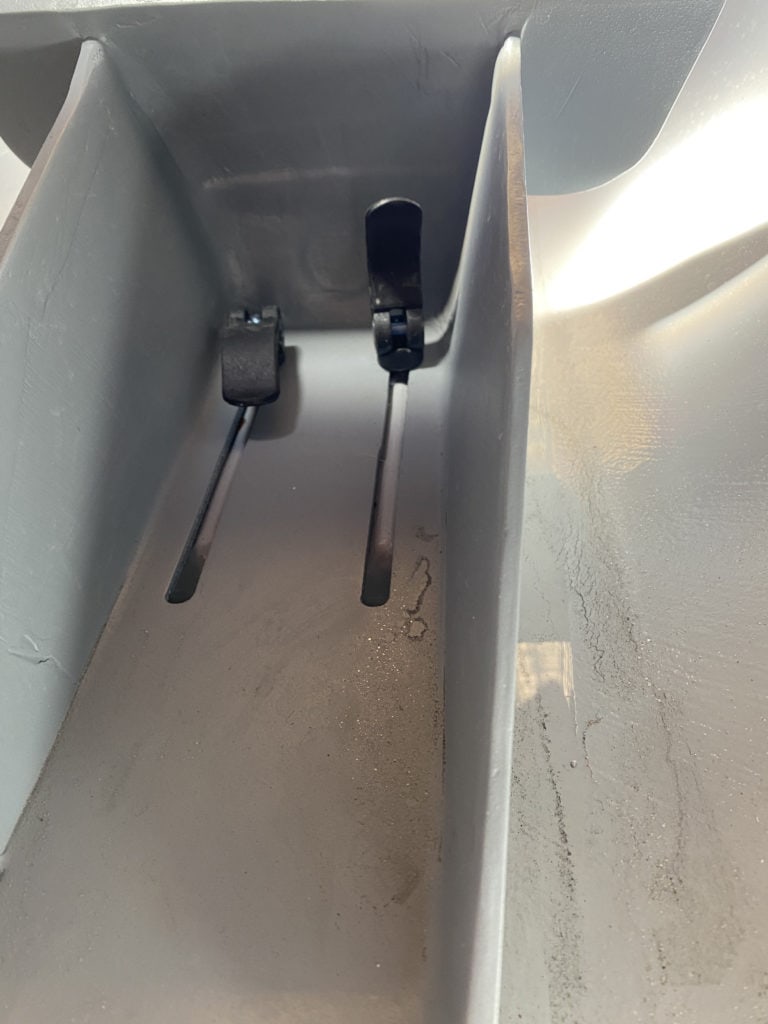
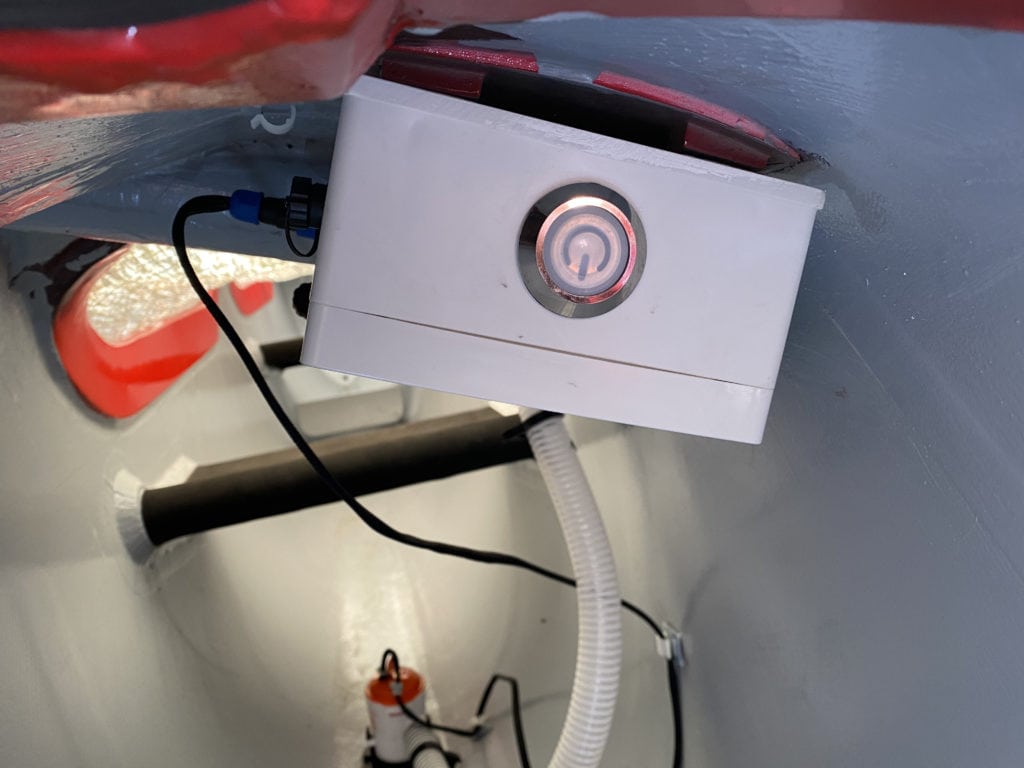
There are two electric pump fittings in the canoe, operated by an On/Off button in seat 3. The canoe arrived with one of the pumps missing so until the replacement part arrives, use the electronic pump judiciously.
Give ‘Ohana a good wash down when you are finished with her and make sure she is back in her proper home with the ama secured, using the strap threaded under the concrete gutter.
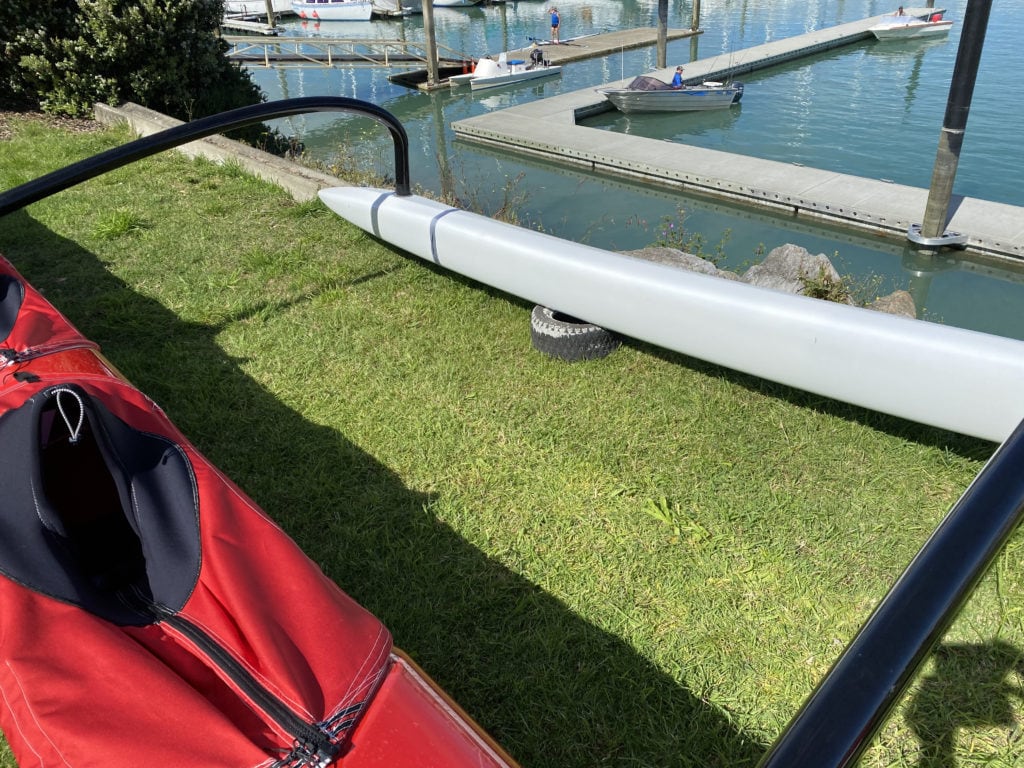
Perhaps the most important thing is just to be aware of how delicate ‘Ohana can be and to exercise just a little more care. The sort of knock on the dock or boat ramp that might see no more than a scratch on the fibreglass canoes could result in expensive repairs and a long period off the water.
Having said all that, the most important thing is that you get to enjoy a new experience – so get out there and have fun. But please, please make sure your crew can gert back in before you let them go out in it.
Its never too early or too late to start paddling waka ama
We always welcome new members to the Maitahi Outrigger Canoe Club.
We have social and racing waka ama crews catering for a wide variety of ages and abilities.
